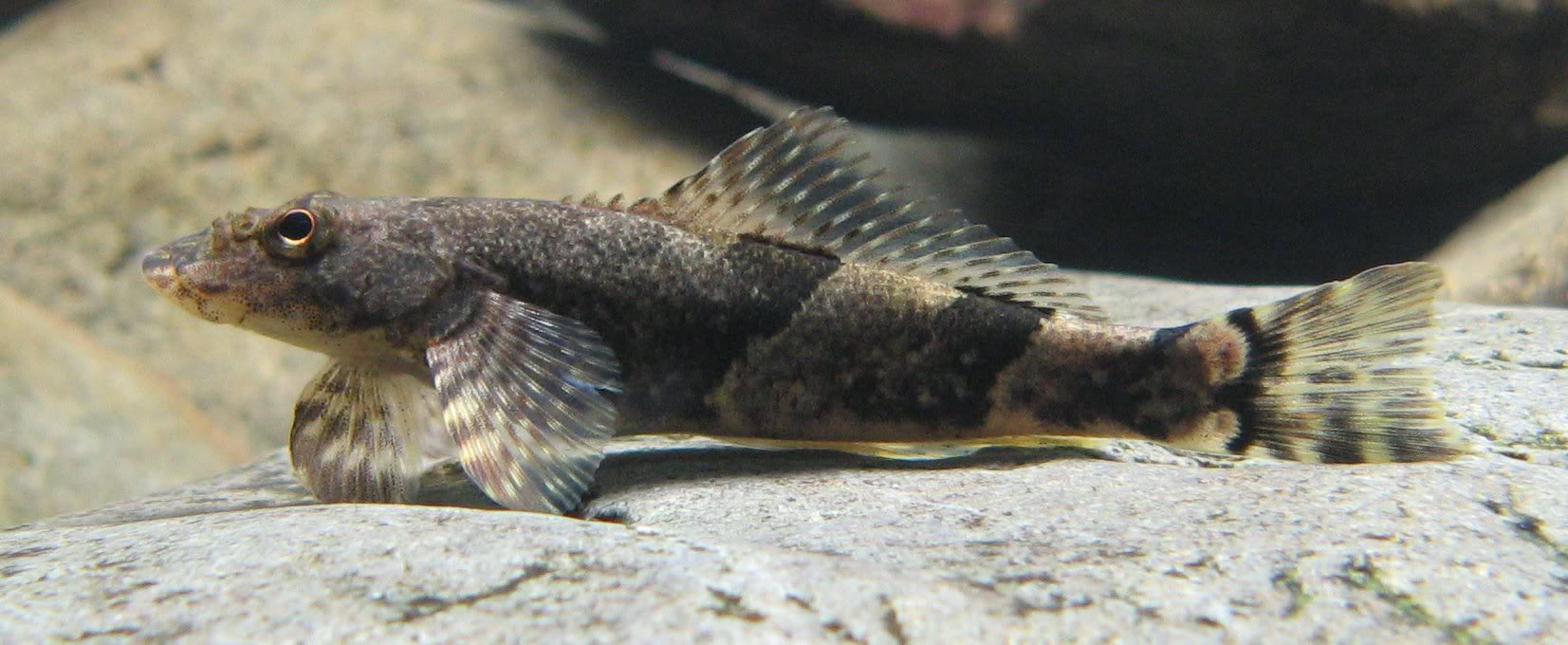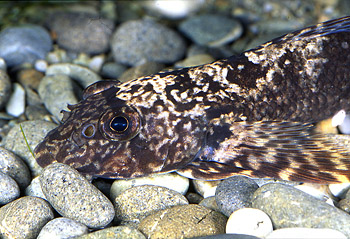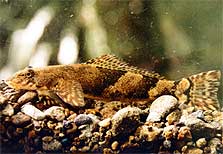
Cheimarrichthys fosteri
FAMILY
Cheimarrichthyidae
TAXONOMY
Cheimarrichthys fosteri Haast, 1874, Otira River, New Zealand.
Placed in its own
FAMILY
or considered a member of the Pinguipedidae.
The latter placement is based on general similarity;
the only cladistic studies provide no evidence of a close relationship
of Cheimarrichthys and pinguipedids.
OTHER COMMON NAMES
Maori: Papanoko.
PHYSICAL CHARACTERISTICS
A broad, somewhat flattened, wedge-shaped head; subterminal
mouth; and robust, scaled body. The dorsal fin has three to
five short spines and 18–21 segmented rays; the anal fin has
one or two spines and 14–16 segmented rays. The pectoral and
pelvic fins are large, with about 50 lateral line scales. Grows to
8 in (20 cm).
DISTRIBUTION
Endemic to New Zealand.
HABITAT
Gravel-bottomed rivers in swift riffles from sea level to 2,300
ft (700 m) in elevation and almost 180 mi (300 km) from the
sea.
BEHAVIOR
Females occupy areas upstream and males the lower reaches.
Diadromous, with juveniles returning from the sea in spring
and summer, when they have grown to 0.6–0.8 in (16–20 mm)
and are already fully benthic.
FEEDING ECOLOGY AND DIET
Eats slow-moving benthic aquatic insects, especially midges,
beetles, and caddis flies, which it probably grazes from cobble/
boulder substrates. Thought to move at night from riffles
to pools to feed.
REPRODUCTIVE BIOLOGY
It is suggested that females migrate downstream for spawning
in summer/autumn, although spawning sites and
BEHAVIOR
are
unknown. Estimated to lay up to 30,000 small eggs, 0.02 in
(0.6 mm) in diameter, that probably sink into the substrate,
with larvae developing at sea.
CONSERVATION STATUS
Not threatened, though upstream migration is disrupted easily
by man-made structures such as dams.
SIGNIFICANCE TO HUMANS
Of traditional importance to the Maori, but subject to no present
utilization.
Photo Gallery of - Torrentfish





 Animalia Life
Animalia Life